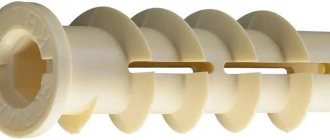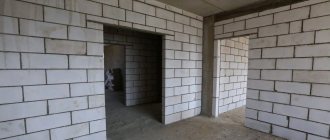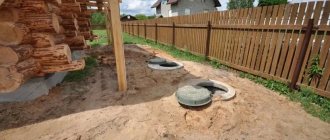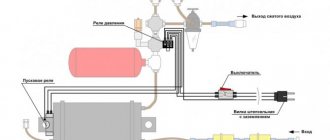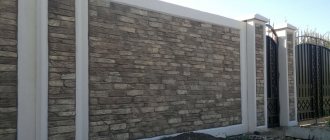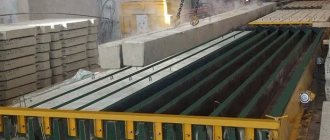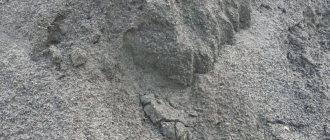Article reading time: 15 minutes
Author of the article:
Foam blocks and aerated concrete are popular wall materials that are widely used in modern cottage and low-rise construction. They are strong enough to build reliable buildings designed for many years of use. Thanks to their porous structure, the blocks retain heat well and weigh little. This allows you to save on heating buildings and do without additional thermal insulation, simplifies the construction of walls, and makes it possible to use a lighter and more economical foundation.
However, the porous structure of cellular concrete blocks does not allow the use of conventional screws and dowels for attaching various parts and structural elements to walls. The material inside is quite fragile, so if the fasteners for aerated concrete and foam blocks are incorrectly selected, its structure will be destroyed in the area of the installation hole. As a result, the fastener does not stay in the hole. This leads to the fall of the fixed elements. In addition, the block itself may be destroyed. Therefore, when performing installation work, you need to choose the right special fasteners for the foam block.
Types of fasteners for cellular materials
Fastening any objects to the foam block can cause problems associated with the destruction of the mounting hole. To avoid this, it is necessary to use special hardware, dowels or adhesives for installation. There are more than 5 types of fasteners recommended for use in porous materials on the fastener market:
- dowel for foam concrete;
- chemical anchor;
- high-expansion metal dowel;
- screw-on dowel for porous materials;
- dowel-nail for fastening insulating materials, high-expansion;
- high-expansion anchor bolt with nut;
- metal frame dowel.
Foam concrete dowel
The fasteners are made of PVC and are very similar to regular concrete plugs. The main difference is the ability to twist in a porous material. Due to this property, the area of contact with foam concrete increases, and the fasteners are securely held in the material.
This dowel is recommended for low and medium loads. It is suitable for external or internal use. You can hang a cabinet or curtain on such fasteners. They are often used when installing a metal frame under siding and other types of exterior facade decoration.
To install the dowel on foam concrete, you need to drill a mounting hole.
Self-tapping screws (screw-on dowel for porous materials)
The screw-on plastic dowel looks like a large-diameter screw, only the thread skirt is much larger.
Due to the enlarged thread, the dowel is securely held in the foam concrete.
Verdict
Various types of fasteners allow you to carry out all the finishing work on the facade of the house, as well as safely install various equipment - air conditioners, heating devices, shelves, etc.
But for each type of mounted equipment, it is necessary to select its own mount, designed for its load. This will be the main feature of working with foam block walls.
Foam block and gas block are not very expensive materials. Mounts for it are also not expensive. And if you also choose plastic fasteners, you will get serious savings and the cost will be generally minimal.
Correct use of fasteners
The use of fasteners for foam blocks requires compliance with the rules and recommendations:
- If a heavy structure (windows, doors) is being fixed, you cannot make holes in the foam block opening at a distance of less than 5-8 cm from the edge. The material has a cellular structure and easily chips at the edges.
- The installation depth of “plugs” made of PVC or other material must be at least 6 cm.
- Fine dust must first be blown out of the holes prepared for the installation of chemical anchors.
- The diameter of the screwed dowels should be 2-3 mm larger than the hole prepared for them, but not more than the width of the skirt.
- It is not advisable to install screw-in fasteners using a screwdriver, since it is easy to turn it in the mounting hole, which significantly reduces the reliability of the fastening.
- To obtain the best result, the surface of aerated concrete can be plastered with a solution of sand and cement.
Why is it necessary to attach timber to blocks?
Projects where it is necessary to attach the second timber floor to the first of the foam blocks are encountered in the construction of houses for permanent residence, small country houses, and bathhouses. Such houses are called combined. By choosing frame or solid timber for the construction of the second floor, owners benefit in price. In addition, it is easier to assemble a frame attic or second floor than from foam blocks. But even in the case where the second floor is made of foam blocks, lumber is required on top to secure the rafter system. The beam must be firmly attached to the masonry, since the load from the second floor will be directed to it. The main purpose of fastening the timber to the harness:
- Distribute the load from the second floor onto load-bearing foam block walls.
- Fastening the walls of the second floor to the first with a rigid bond.
What material to choose for the correct binding of the timber
To fasten the foam block masonry on top, use chamber-drying or natural timber, pre-treated with antiseptic compounds. Typically, sections of 100x100 mm, 150x150 mm, 100x150 mm are used. The material is fastened around the entire perimeter of the foam block box with continuous strapping. Separate beams are connected to each other with a straight or main lock. The locking connection is made in size depending on the cross-section of the beam.
To add rigidity, the connection lock is secured using a simple screw or nail. The lumber is laid on the wall of the combined house from the inner edge of the foam block masonry. It is necessary to leave at least 50 cm outside the wall for installation of the drainage system. To give greater strength, you can line the outside of the beam with one row of bricks. The material will rest against the brickwork and when fastened, the load will be distributed more evenly. But in order to impart rigidity and reliability and secure the timber to the foam block, it is necessary to correctly select the method of tying it to the combined house.
Features of fastening heavy structures to foam blocks
If you need to securely fasten a heavy structure to foam concrete, you must approach the choice of fasteners as responsibly as possible. The best option is through-mounting using metal studs and bolted plates. But this option is not always possible. The second method is to use a chemical anchor for fastening together with a metal anchor bolt or pin more than 15 cm long. This technology will distribute the loads as evenly as possible and prevent internal destruction of the material.
Which option should I choose?
The choice of fastening method depends on its purpose and expected load; for example, photographs are hung on nails.
For reliability, you need to select suitable hardware, adhering to the following rules:
- Paintings or photographs are hung on nails.
- Metal consumables are used for insulation, sound and waterproofing of facades, and fixing household furniture.
- The pipeline is secured with specialized dowels.
- Mirrors and sconces are fixed with plastic parts.
- Nylon and metal fasteners are used to work with frames for windows and doors.
Recommendations from experienced builders
Experienced builders recommend, if possible, to avoid attaching heavy structures to the foam block. If this is not possible, then you need to use high-quality chemical anchors for installation. Also, builders do not recommend using power tools to screw in hardware. A powerful screwdriver is capable of pulling out even an installed chemical anchor from a foam block, not to mention ordinary dowels.
The video below compares the reliability of fastening a chemical anchor, self-tapping screws for foam concrete and metal dowels for foam concrete:
Did you manage to solve your problem using the recommendations from the article?
Yes!
46.21%
No. More answers required. I'll ask in the comments now.
38.35%
Partially. There are still questions. I'll write in the comments now.
15.45%
Voted: 751
Stage two - choosing a tool
Now it’s time to prepare all the necessary tools and auxiliary materials. To cover your house with siding you will need:
- hammer drill;
- hacksaws for wood and metal;
- Bulgarian;
- construction cord or regular twine;
- roulette;
- plumb line;
- spirit level;
- hammer;
- Phillips and slotted screwdrivers;
- ladder;
- building triangle;
- marking pencil;
- long wooden beams with a cross section of 60 by 70 or 70 by 80 mm.
Choosing siding for finishing work
Currently, this material is presented in three categories on the market:
- Metal siding. Distinctive features are good strength and retention of performance properties even under adverse chemical external influences.
- Vinyl siding. It has good performance parameters and is easy to install.
- Basement siding. It is thicker than analogs and is therefore ideal for areas that are at increased risk of damage.
To select a material, you can use the summary data from the table:
| Parameter | Siding type | ||
| Vinyl | Metal | Wood | |
| Ecology | No | No | Yes |
| Aesthetics | Yes | Yes | Yes |
| Additional processing | No | No | Paint and varnish coating |
| Service life (with proper maintenance) | 30 years | 50 years | 40 years |
| Fire hazard | Melts, doesn't burn | Doesn't melt, doesn't burn | Lit |
| Reaction to high temperatures | Increased brittleness at low temperatures | Virtually absent | Virtually absent |
Note. When choosing products from a well-known manufacturer, the buyer can count on a good range of related elements, depending on the size and configuration of the walls.
A preliminary calculation of the siding for the house is required, on the basis of which it will be possible to select the optimal amount of building materials.
Cement base or glue
For masonry, you can use both glue and classic cement composition. A realistic assessment of the construction process will help you make a choice. If foam concrete modules are non-standard in size or have an unusual shape, preference should be given to a cement-based solution.
It is better to use professional glue in the following situations:
- Sufficient experience and skill level of the construction team.
- Foam concrete blocks having strictly regulated sizes and shapes.
The special glue is free of impurities and various additives that can cause sediment to appear. The only permissible component (mandatory for use) is fine sand, and to improve the degree of adhesion, polymers and plasticizers are introduced into the solution.
Chemical anchor for concrete and aerated concrete
With the help of such fasteners, massive elements and structures and equipment are mounted. They are used for both gas blocks and foam concrete. They can be used to hang ventilation ducts and cable routes, boilers, hoods and air conditioners, roofing and much more.
This is a more expensive and difficult to install type of fastening, which is considered very effective and suitable even for facade work. Its essence lies in the fact that a special chemical composition is placed into the finished hole, and then fasteners are introduced into it - most often a pin. Also, instead of a solution, an ampoule is inserted into the hole, which is broken by the fastener screwed into it. This method is suitable if we are talking about piece work, since there will be no excess composition left and it will not be lost.
The hardened anchor can withstand up to 800 kg. In order for it to cope with such a load, it is important to properly prepare the wall and install it correctly. First of all, drill and clean the hole, then place the ampoule in it, screw in the pin, wait for it to harden according to the instructions and secure the connection with a nut.
